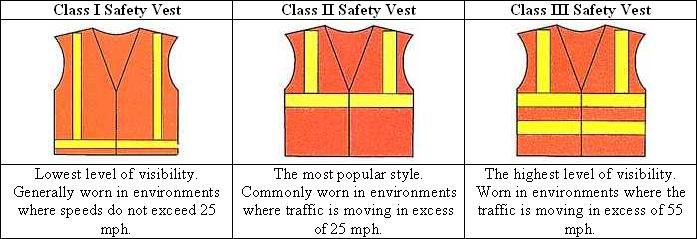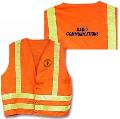|
OSCAR Meeting
The next regular OSCAR meeting is 09-Sep: Ø9:ØØ AM (local time) at Hardees in Owatonna.
SKYWARN
We had some pretty good winds in Owatonna 24-Aug. SKYWARN operations shined in keeping spotters (ham and non-ham) coordinated. Thanks to all that participated. We did have one communication problem crop up when the power dropped at the repeater site. The repeater defaults to a 100.0 PL when it is powered up. When the power dropped, it took a couple of minutes to recognize what happened. In the interim, communication via ham radio stopped. We will develop a standard operating procedure to cover this scenario in the future. Taking this as an opportunity to improve, be sure you have the ability to:
1. Engage and change the PL tone on your radio.
2. Operate your radio in the "reverse" and simplex modes.
Emergency Communications Class
From Albert Lea ARC
The Albert Lea club will be holding a training class on emergency communications basics on October 28 from 8 AM until 1 PM. This class will be taught by the AERO group in the Twin Cities. AERO is the Association of Emergency Radio Organizations and coordinates response by amateurs in the urban area. Class participants will receive AERO certification by completing the class, which includes a hands-on exercise that is very effective in teaching good technique in tactical communications.
Tom NØUW participated in the class at Austin last year. It was surprising what developed in the hands-on exercise.
National Incident Management System (IS-700) Training
NIMS is the standard protocol being used for handling emergencies. Anyone working in a county emergency needs to complete the NIMS training by the end of September. By completing the training, you will be prepared to step into a scenario with a better idea of why some things are happening the way they are. NIMS certification can also affect the reimbursement the county receives for expenses during an emergency.
The CERT group is holding a classroom session on 06-Sep at the Community Center at the Fair Ground from 6:30PM to 9:30 PM.NIMS training takes 2-3 hours to complete. It is alos available on-line. Please let Tom NØUW know if you’ve completed the NIMS IS700 training.
Safety Vests
When working a communication emergency, your Steele County ID badge identifies who you are. The GO KIT in the July Newsletter suggested visible identification such as a Amateur Radio hat or vest. The safety vest can serve the dual purpose of promoting your safety as well as helping to identify your role. There are many safety vest designs and styles. From a visibility standpoint, vests are grouped into three different classes, as illustrated below.

 The cost of a vest depends on the Class, size, materials, and features. A simple Class I mesh vest can be purchased for under $15 at various retailers. Flame retardant versions can cost $100. For emergrency radio operations, the supplier for ARRL logo merchandise Barker Specialties has a vest worth considering. ARES07 is a Class II vest with the ARES logo on the front and RADIO COMMUNICATIONS on the back. It costs $23.75 plus S&H. The cost of a vest depends on the Class, size, materials, and features. A simple Class I mesh vest can be purchased for under $15 at various retailers. Flame retardant versions can cost $100. For emergrency radio operations, the supplier for ARRL logo merchandise Barker Specialties has a vest worth considering. ARES07 is a Class II vest with the ARES logo on the front and RADIO COMMUNICATIONS on the back. It costs $23.75 plus S&H.
RF Exposure in Israel
From AR Newsline
Fear of R-F exposure could take many Israeli hams off the air in early 2007. From January 2007, many of Israeli radio amateurs will not be able operate their radio equipment unless it has been checked and authorized by government inspectors. Amateurs will also have to obtain a permit for the erection of antenna and towers. Permits will only be granted if the installation can be proven not to cause harmful radiation.
Vanity Call Sign Fee Drops
From ARRL
The regulatory fee to obtain or renew a vanity call sign will drop slightly on 06-Sep. The new fee will be $20.80 for the 10-year license term.
IBOC Interference
From CGC Communicator
In Band On Channel broadcasting (IBOC) is a system that permits broadcasters on the medium wave and VHF FM bands to add digital audio without removing their analog signal. The theory is that a digital receiver will decode only the digital signal and the digital signal will sound like off channel noise on an analog radio. In practice, the system does not take into account the large number of folks who want to hear F-M stations in a near-by city. The addition of IBOC is limiting the reception of stations from outside of their normal reception areas.
Ionosphere As An Antenna?
From AR Newsline
Samsung is looking at the possibility of using the ionosphere as a medium for long distance communication. According to a recent patent the company filed, this could be achieved by launching UHF signals behind a 1GHz carrier signal to create an alternating current in the ionosphere. The alternating current could then be modulated at a particular frequency to create an antenna of global proportions.
FM Modulators
From CGC Communicator
National Public Radio (NPR) Labs took measurements on more than 28,000 moving cars on two channels, 87.9 and 88.1 MHz, and estimates that a driver could pass dozens of FM modulators in an average commute. The lab found that nearly 1% of cars had operating FM modulators on these two channels. NPR Labs says the measuredfield strengths of about one-third of the devices exceeds FCC Part 15 emission limits.
FAA Regulation of RF Spectrum
From AR Newsline
If an Notice of Proposed Rule Making from the FAA becomes law, VHF TV broadcasters, FM radio broadcasters, satellite operators and even two-way radio and C-band uplink operators may have to add the FAA to the list of regulatory agencies. The FAA could have the power to require that notice be given for the construction or modification of an existing facility supporting RF radiating elements in specific frequency ranges. That list starts at 54 MHz, but Amateur Radio appears to be excluded.
Panic Alarm
From CERT Newsletter
If you do not have a house burglar alarm, think about using the panic alarm on most car key fobs. Place your car keys on the night stand when you go to bed. If you think someone is trying to get into your house, or if you hear a noise outside your house, just press the panic alarm on your car key chain. If your car alarm goes off when someone is trying to break in your house, odds are they won't stick around. Try yours to make sure it works before you rely on it.
Line-Of-Sight
From ARRL Contest Rate Sheet
If you want to determine if two points have line-of-sight, go over to MicroDEM. It can do terrain mapping, overlay road maps, and similar useful tricks.
Power Line Noise
From ARRL Rate Sheet
Go over to Power Line Noise to get information and other links on noise.
On The BPL Front
From Multiple Sources
While maintaining what it says are safeguards against harmful interference to existing radio services the Commissioners turned down a request by the Amateur Radio community to prohibit BPL operations in ham radio spectrum. Rather, it insists that current standards are more
than reasonable and any interference to ham radio, it will be looked at on a case by case basis. The agency also denied a request by the aeronautical industry to exclude BPL operating
on low-voltage lines from frequencies reserved for certain aeronautical operations, a request by the television broadcast industry to exclude BPL from frequencies above 50 MHz, and a request from the National Telecommunications and Information Administration (NTIA) to expand BPL exclusion zones in the vicinity of certain radio astronomy systems.
The FCC denied a BPL industry request to extend the effective date to meet equipment certification requirements, but it did create a limited exception. BPL systems now will have another year to continue installing or replacing equipment "that otherwise meets the Part 15 rules" in their present coverage areas.
The Commission denied the BPL industry's request to drop the 30-day advance notification requirement for the public BPL database.
Netgear announced a new set of adapters that turns house electrical wiring into a fully operational data network. Basic setup consists of two adapters plugged into outlets. One gets hooked to your broadband souce and the other to your computers ethernet port. The potential for interference has not been determined.
| 
 The cost of a vest depends on the Class, size, materials, and features. A simple Class I mesh vest can be purchased for under $15 at various retailers. Flame retardant versions can cost $100. For emergrency radio operations, the supplier for ARRL logo merchandise
The cost of a vest depends on the Class, size, materials, and features. A simple Class I mesh vest can be purchased for under $15 at various retailers. Flame retardant versions can cost $100. For emergrency radio operations, the supplier for ARRL logo merchandise 